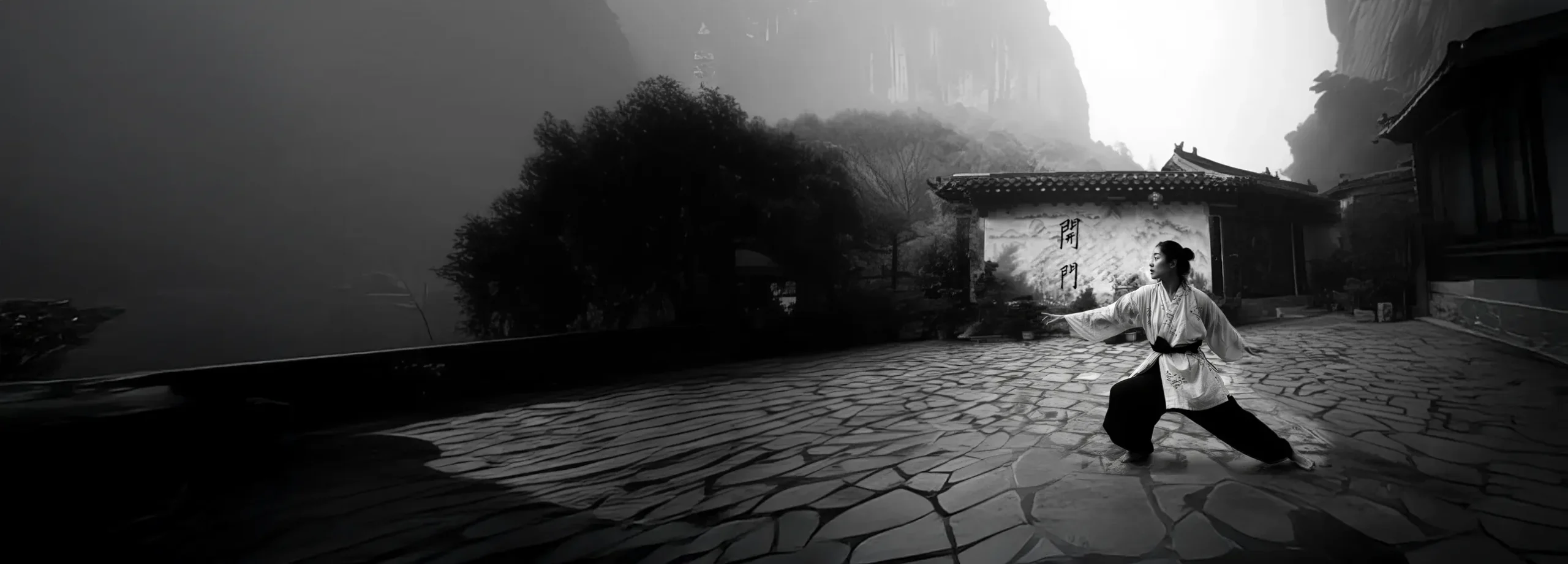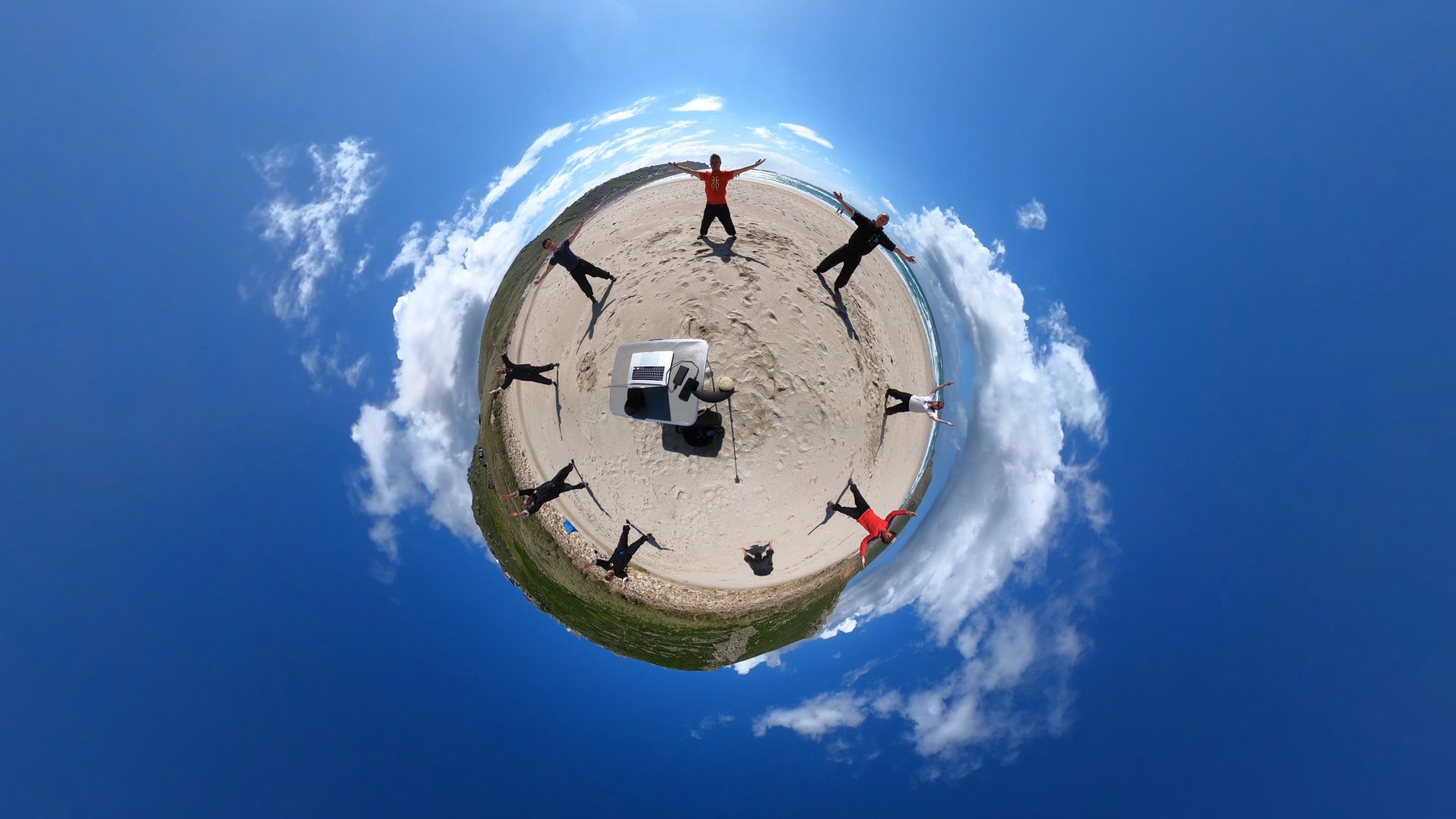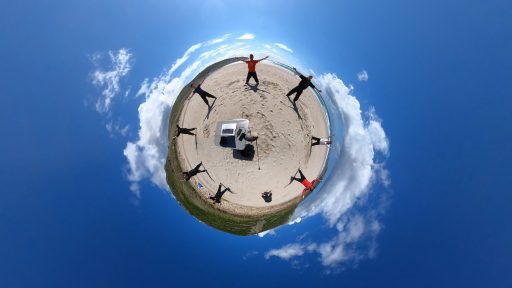
Why should this beautiful sequence of movements be known as the ‘Supreme Ultimate’ (Tàijí 太极)? Does it mean that we have to achieve absolute perfection in every movement that we execute, or does it mean that we are aiming for an ultimate goal in everything which is a true component of this wonderful art?
There are thousands of people in the West who have gained great benefit from the practise of Tai Chi Chuan, and there are many more who are seriously interested in learning. Unfortunately many of these people learn only the physical aspect of the form, and therefore gain very little from it. Many of them spend a great deal of time in practice, yet without discovering the full depth and potential of the art, all their work is doing no more than scratching the surface. Even their physical progress is limited, because the most important depths of their physical selves remain unused and undiscovered.
The majority of T’ai Chi schools teach only the physical side of the whole art. They sincerely believe that they are progressing by just learning the stances, but inwardly they are often doing more harm than good, because by remaining on a physical level they never express their complete selves, and in so doing retard their own progress in the wholeness of life.
This is a shame, for after setting themselves to learn the art over a long period of time, practising for many hours and showing great interest and dedication, their efforts have often been completely wasted. They have not progressed at all on the physical level, and have never learned the other dynamic aspects of this wonderful art.
The truth is that there are five complete sections in the complete training of Tai Chi Chuan, so every student should ensure that they train under the supervision of a fully qualified teacher who can not only teach these five sections but can also demonstrate them. Then and only then will the student gain maximum benefit from this art in every respect, have a complete understanding of its true depth, and develop an awareness which they had not previously known existed.
The Lee style is taught through the auspices of the Taoist Cultural Arts Association, who are ensuring that the Taoist Arts, which were maintained and developed by the Lee family, will always remain exactly as they wanted them to be. The Association also ensures that this great depth of knowledge will only be taught by teachers who have qualified, practised, and been taught within the Association.
Let us now look at the five sections of Tai Chi Chuan as taught by the Taoist Cultural Arts Association.
The Physical
The first step is to ensure that you are eating and drinking sensibly, and it is recommended that anyone who is seriously interested in permanent good health should try to adhere to the rules laid down by the early Taoists. These are called Chang Ming (The Taoist Health Therapy for a long Healthy Life).
The second step is to start to practise the various physical aspects of the sections of the ‘form’ by aiming towards perfection of the stances (legs), posture (body) and technique (hands and arms). Having learnt a few movements or sections, try to magnify your sensitivity by learning to feel the rhythm and flow within the technique of your hands and arms, and match and harmonize the rhythm and flow from one stance of your legs and feet to another. Be dedicated and practise a few movements daily, morning and evening, and you will eventually achieve these aims.
Remember, whilst you will be utilizing your body to evaluate the depths of your movements, you must never become solely physical, or try to use your strength, for by so doing you will restrict your own development.
Many T’ai Chi teachers will tell you that your movements will exercise the whole body. In fact the parts of the body are complementary — it is the top that exercises the bottom and the bottom the top. The right exercises the left and the left the right. In our arts we prove this to you in a multiplicity of ways, so you learn to appreciate and understand your own body even more. Total harmony and perfection of all the movements is essential to achieve the ultimate of your physical self.
The Mental
From the very beginning of your physical practise you will find that you become more mentally active, and a great deal of concentration is required to obtain the perfection you are aiming for and your teacher expects. You have to harmonize your stance on both left and right legs, attain the correct angle of your whole body, top and bottom and right and left. Then there are all the variations in your hands and arms, which can move in totally different directions, create their own characteristics, and move at varying speeds. All this is created by the mind, and must all be controlled from the mental source. A simple act of emptying the mind, as some try to do in meditation, actually fills it, so that it becomes more active than ever.
Dynamic mental control can create a tranquil mind without its being empty. It can utilize power without the use of strength, cause heaviness without weight, create length from shortness and speed from slowness.
All these aspects of mental control are practised continuously in all our Taoist arts classes. Perhaps one day you too will be able to execute every movement of T’ai Chi Ch’uan by remaining absolutely stationary and immobile. When you reach this very advanced stage, you can go one step further by practising the various aspects of the Taoist Wand (Taoist Mokun), which is the advanced control of energies by the mind.
Breathing
Most people breathe in and out every minute of every day and never give it a second thought, unless they have some sort of respiration problem. Yet the Taoists of ancient China created over fifty different specialized breathing exercises, all of which are incorporated into our arts in a special section called Hūxī yīzhì 呼吸医治 (Taoist Respiration Therapy). Amongst them are many special breathing techniques which also incorporate specific physical exercises, purposely designed to assist in the cure of many different illnesses connected to specific organs of the body.
In addition to these, there are other very special breathing exercises that help to activate or sedate the natural energy (Sheng Chi) of the body, and these exercises are an integral part of our training.
It is important for a beginner to take things easy at the beginning of their training. Very few people have learnt to breathe fully, so their bodies are not used to dealing with a large amount of oxygen. Even fewer people have learned to breathe deeply in the lower abdomen (Tan Tien). Thus in the early stages of learning the form let your breathing be as natural as possible, then slowly your teacher will help you to co-ordinate your breathing with your movements and your mind.
If your breathing remains natural, then slowly through your training you will be able to let it sink lower and lower until it eventually reaches the lower abdomen. Your early training will also assist in this matter, because through correct stances with relaxed bodies and relaxed movements, breathing will naturally sink lower. Once breathing into the lower abdomen becomes natural and automatic, the energy of the body (Sheng Chi) will be enhanced.
Shēngqì 生气
The development of natural energy is dependent on eating and drinking the Chang Ming way, so that the tissues of the body become more supple and flexible, thereby helping the body to accept really deep breathing. Really deep breathing should take place in the lower abdomen, because this is where there are two energy centres, one of which is where the Qi develops and stores itself. As coal is the fuel of a fire, so breath is the fuel of the natural energy of the body. Respiration exercises are thus a natural part of Qi development. Shēngqì 生气 (Vitality Power) was also called ‘Internal Energy’ (Nèi bù qì 内埔气) or ‘Intrinsic Energy’ (Tiānrán nénglì 天然能力), and it is the energy that everyone who practises our Taoist arts strives to cultivate.
A strong Qi helps everyone to attain permanent good health. In our Taoist arts we learn to use it whilst practising our form of T’ai Chi Ch’uan, and learn also how we use it in every part of our lives, whether at work or at play.
Its force is colossal and far greater than brute strength can ever be, enabling anybody — man or woman — to have the power of five people. The amazing thing about it is that you were born with it, and you possess it all your lives. Its benefit to your health is beyond the understanding of the average person, but it helps to fight germs and bacteria within the human body, and a truly strong Chi will improve your health to such a degree that colds and influenza are never experienced.
The Qi is invisible, it has no aroma, and you cannot hear it, yet it is an integral part of your body and it influences your daily life. It is substantial and insubstantial; it is unyielding yet pliability itself; it is soft and gentle yet it can be as hard as steel; it is weightless yet it cannot be lifted. Our arts teach us to know what it is, and where it is stored and generated, and how we can cultivate, utilize and control it. When your health is really good and you have practised our arts for some time, then you will be able to feel the flow of your own Qi through your body.
Like mental energy, Shēngqì depends for its strength and regeneration on the personal good health of the person, constant deep breathing, and relaxation. That is why Tai Chi Ch’uan is good for the health in so many different ways. We must be able to store energy before we can use it, and we must learn to conserve our vitality before we can achieve good health.
Most people in the West, particularly those who live or work in cities, find it very difficult to relax, and require additional aids to help them to do so. The Taoist art of Tai Chi Chuan has the answer. Besides the specialized warming up exercises which all our classes commence with, there are also a number of simple breathing exercises that help to develop this vital energy.
Here is a simple breathing exercise that you might like to try. Begin by sitting on a chair or, preferably, cross-legged (your left leg outside your right) on the floor, freeing your body and mind from outside influences and internal tensions. Place your hands flat on your abdomen, and whilst keeping your body fairly upright without stiffness, allow your shoulders to drop as low as they will go. You may notice that your chest will depress slightly, but don’t worry about it, it is quite natural.
Now take a deep inward breath (Qì xī 气吸) through the nose, but instead of letting the air fill your lungs and chest, allow your breath to sink so that your abdomen swells outward. Then exhale (Hū qì 呼气) through the nose, but as you do so, press your hands firmly against the abdomen, so that you force the stale air out through your nostrils. Repeat this sequence six times daily. Whenever you feel tired and run down, use this breathing exercise. By repeating it regularly, your health will benefit and you will feel better within yourself.
It takes the average person in the West about six months to a year to begin to feel the vitality power within themselves. Once having learnt to feel this energy, the next step is to direct it from the lower abdomen to any other part of the body through mental control.
This is known as ‘propelled movement’ (Tuījìn Gǔdòng 推进鼓动), and it is only by obtaining mastery of it that a person can attain true mastery of their own energies.
Jīng shēng lì 精生力
This energy is known as ‘macro-cosmic’ or ‘external’ energy. It is the natural energy of the universe, for it comes down from the heavens, passes through everything on this earth, including our own bodies, enters the earth and, after gathering further vitality and power, returns upwards to return from whence it came. It is constantly present and passing through our human bodies, and it can be harnessed, stored, controlled and utilized by everyone, providing they have the mental training to do so.
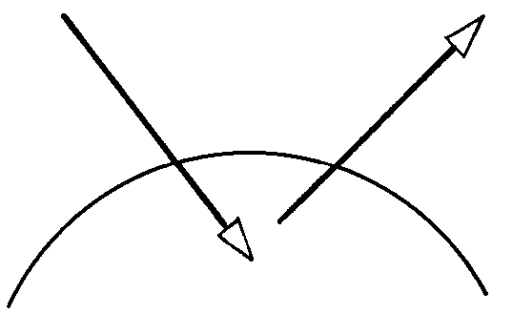
By utilizing this dynamic energy, many ancient Chinese philosophers lived from 150 to 200 years of age, and even in this modern era it is possible to have, even at the age of sixty, the skin, body, mentality, energy and vitality of a twenty-year-old. It is not time or the number of years that matter, it is the true health of the individual that eventually shows through. The Taoist will tell you and show you the real truth: keeping fit does not necessarily make you truly healthy, but if you are truly healthy then you are automatically fit.
On its downward journey Jīng shēng lì passes through all men, down the spine and out through the lower abdomen. This circular action is centripetal in its flow, and this Li energy moves in this way through all Yang things. On its upward path, or return journey from the earth, it passes through everything that is Yin, in a centrifugal motion. In passing through all women it comes up from the ground, along the spine, and out through the head. These two directions are represented as follows:
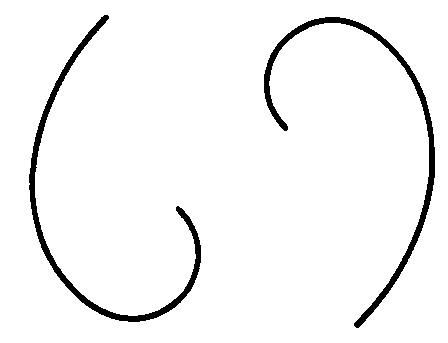
When these two directions were placed together by the ancient Taoists, they represented the well-known Yin and Yang symbol:
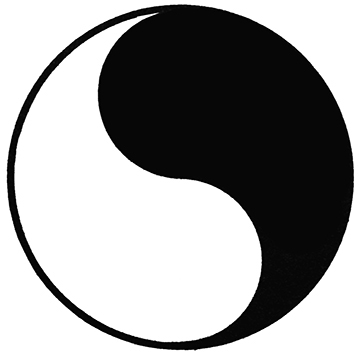
Not only did this concept represent Yin and Yang, showing the two sides of everything, but it also expressed the idea that nothing had a beginning nor an end, everything is everlasting. Later, the ancient Taoists added a further permutation, as you will see in the next chapter, which demonstrated their closer appreciation of the work of the Tao.
A more complex symbolic expression of the workings of the universe is the Eight Trigrams (Bāguà 八卦) which are included in the Book of Changes (Yì jīng 易经), which is one of the most important books in the world, for thousands of years of wisdom and understanding have gone into it. Both Confucianism and Taoism have their roots here, so it is natural that the basic principles of T’ai Chi Ch’uan are derived from it.
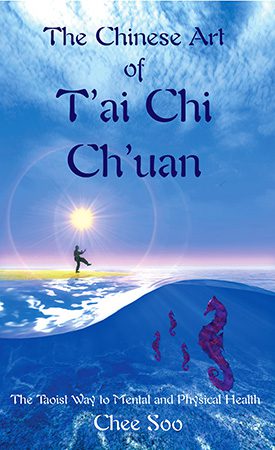
From
The Chinese Art of T’ai Chi Ch’uan
by Chee Soo
